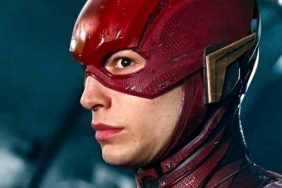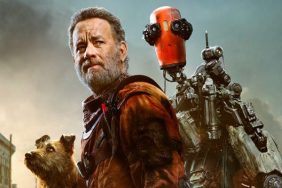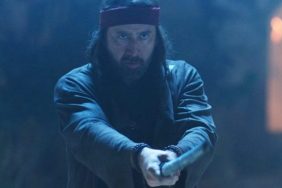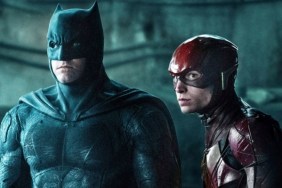
CraveOnline: The Mad Max movies center around the myth that is Max, but I also sometimes wonder what’s going on in other parts of the world. It can’t all be scorched earth. There must be some sort of hero of the wastes but in a tropical area, for example.
George Miller: That’s interesting, because that’s dealt with Fury Road.
Is it really?
Yeah. It’s alluded to. Here’s basically what we did. We said that the major coastal cities on a continent like Australia had been razed, and marauders – because they were mobile, usually on bikes – went across the land like locusts. And then the Immortan Joe, Hugh Keays-Byrne’s character, who is the warlord of the wasteland, he now has a citadel where he controls the water. And then he has Gas Town, that we see from a distance, which supplies the gas. And then there’s Bullet Farm, which supplies their munitions.
So it’s an ecology, almost a hermetically sealed ecology. An economy and an ecology in a wasteland. And they’re asking themselves the question, is there anyone else out there? They ask themselves the question.
“Because of the delays we went deeply into the backstory of everyone and we ended up with two other screenplays.”
Do you imagine Bartertown [from Max Max Beyond Thunderdome] being part of that community?
Yeah.
So it’s all kind of connected.
Bartertown is the equivalent of… yeah, at the base of the citadel is the equivalent of Bartertown. So it feels like a more fully realized world, and because of the delays we went deeply into the backstory of everyone and we ended up with two other screenplays. So we’ve got two more to do if this works well enough, and I’ve got the energy to go back into that insanity of shooting those movies. They could be mad.
It’s interesting to look at the rest of your career – you’ve made great films like Babe: Pig in the City and Witches of Eastwick and you did my favorite part of The Twilight Zone Movie – and see that you keep coming back to Mad Max. What is it about Mad Max?
They play like imaginary friends in your head, and an idea pops into your head and you keep on pushing it away… I mean, like a lot of people, that’s I’ve done in my life. I’ve lived the imaginary life. I grew up in a remote rural town, I spent most of my childhood in play, and I’ve been doing it. I’m hardwired now for doing that. So a lot of stories come to me, and then some of them just keep coming and that’s what happened to this story.
I definitely didn’t want to do another Mad Max twelve years ago. Then just, oh, I got excited about it. I spoke to Brendan McCarthy who is the guardian of… he’s a wonderful graphic artist. Road Warrior, or Mad Max 2 as it’s known to me, had a big influence on him, and he said, “If we do it, let’s do it.” It’s a long story but we did storyboards and the whole thing, and it was a chance, having done the digital films, to go live action but use all the technology to erase tracks, erase harnesses, to change skies…
So it’s still very real? You’re not using CGI cars or anything like that?
No, there’s no CGI like that.
Good for you.
There’s a CGI storm, because there’s no other way you can create it, but everything else you see is real. Every car stunt is real, and not only that, we were able to put our actors… we’ve got very athletic actors. Tom Hardy, who’s a rugby player. Charlize who’s a dancer. Nic Hoult is very athletic. All the wives, the girls, were able to do it. So it’s them. Rosie Huntington-Whiteley, there’s a bit where she opens the door of a speeding rig and is hanging off it, and it’s her.








